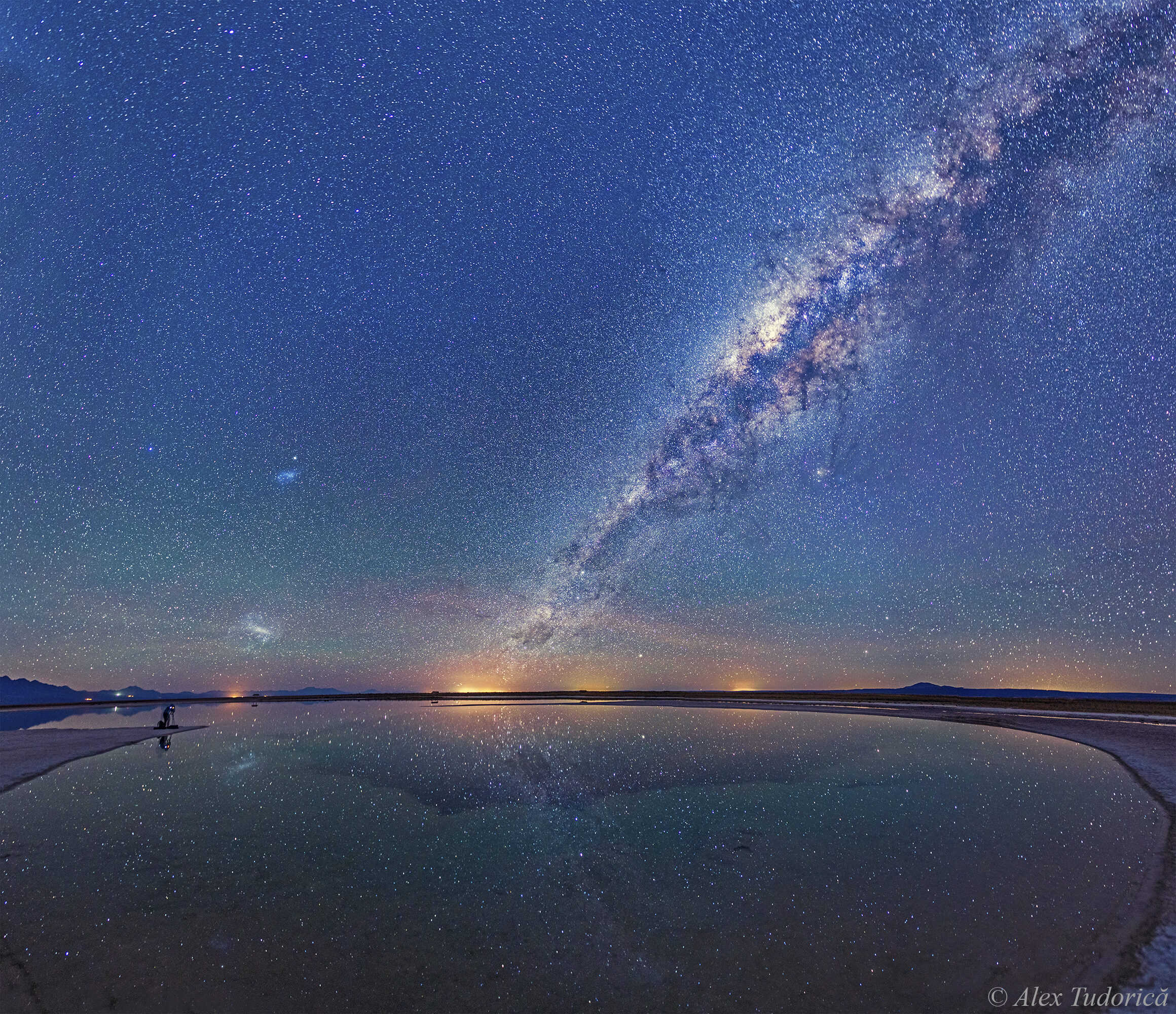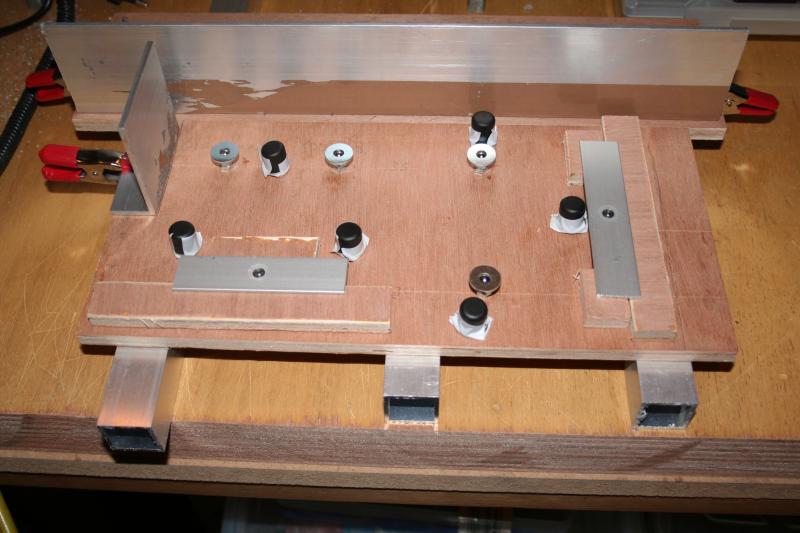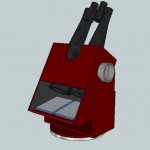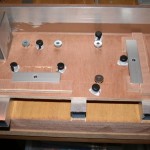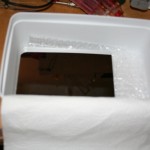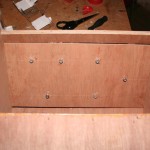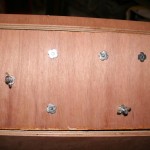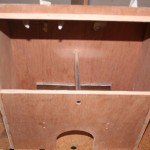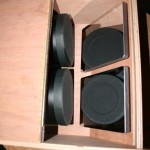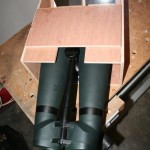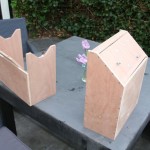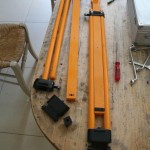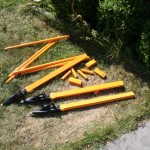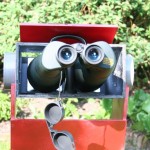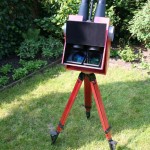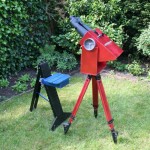
When I bought my 28×110 binocular in 2008 it was obvious that this instrument needed a big stable mount. The binocular weighs approximately 7 kg. Although I initially wanted to build a mirror mount for this binocular I wasn’t able to find a good enough mirror. In the end I build a parallelogram which worked fine but restricted observing to a maximum altitude of 60 degrees. Also I found using a mount like this a bit uncomfortable, so a mirror mount remained on my wish list. When a friend started his own mirror making company (Huygens Optics) last year I asked him to make me a couple 160 x 120 mm flat mirrors. I had a lot of discussions with friends about the required quality of the mirrors. In the end it seemed that a PV of 1/2 lambda is more than sufficient for a 28 x 110.
The mirrors were installed at a 40 degree angle. This way I can easily see the zenith and can observe as low as 5 degrees. Lower didn’t seem useful and by setting the angle at 40 degrees I could get away with smaller mirrors. The mirrors are glue to 4 point mirror cells. Small ball magnets are used to attach the mirrors to the cells, this way the mirrors can be easily removed for transport. Both mirrors are tilted on different axes to collimate the binocular. The mirror box was constructed with 9 mm plywood. A 4 mm thick aluminum plate was used to reinforce the box where the binocular is attached to it. The plywood used for the mount was 12 mm thick. Since I didn’t see the need for high quality wood the mount needed a fair bit of paint.
As can be seen in the Sketchup drawing I initially planned on using the mirror mount on a table. A bottom plate for this configuration will be made in the future (useful for travelling). For now a tripod seemed more practical. Since the surveyor tripod that I’m using was a little high for use with the mirror mount I shorted it. For aiming the mount I use a quickfinder. My first views with the new mount were fantastic. Collimation is a matter of seconds and viewing is very relaxing. The only downside is that some objects look a little different because of the flipped image. This is especially apparent when viewing the North America nebula.

